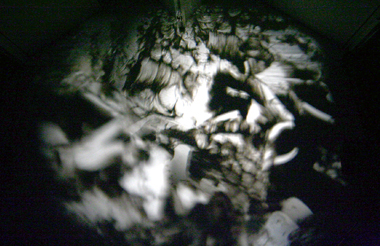Artist in Focus: Ken Jacobs
A pioneer of American avant-garde cinema, Ken Jacobs (US, 1933) is still (at 80 years old) one of its most prolific figures, having enthusiastically embraced digital filmmaking in the late 1990s. From the seminal 'Tom, Tom the Piper’s Son' to the 'Nervous Magic Lantern' performances and his recent digital and 3D explorations, Jacobs is an essential filmmaker whose work is an uncompromised declaration of love for cinema.
A New Yorker by birth, Jacobs studied painting with Hans Hofmann but quickly gravitated toward film. His early friendship with Jack Smith resulted in collaborations including Blonde Cobra, Little Stabs at Happiness and sections of Star Spangled To Death. In later work, actors and narrative disappear, giving way to a cinema that revolves around the act of viewing: “There’s already so much film. Let’s draw some of it out for a deeper look, toy with it, take it into a new light with inventive and expressive projection. Freud would suggest doing so as a way to look into our minds.”
A cinema activist and a teacher as well as a filmmaker, Jacobs has been an integral part of the New York alternative film scene since the 1950s (the Kuchar brothers debuted their 8mm shorts in his loft). In 1966, together with his wife Flo, he established the legendary Millennium Film Workshop. Jacobs was also the cofounder – with Larry Gottheim – of one of the USA’s first cinema departments at Binghamton University, where he taught for several decades, influencing subsequent generations of filmmakers and artists such as Phil Solomon, Mark LaPore, Jim Hoberman, Art Spiegelman and Lee Ranaldo.
It’s impossible to survey a career that spans seven decades during the limited time of the Courtisane festival. This Artist in focus programme is by no means a retrospective, but rather a celebration of the life and work of a radical, visionary artist, and his life-long partner and collaborator, Flo Jacobs.



